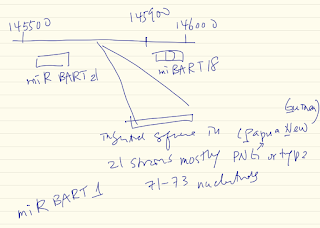Paul Farrell (Imperial College London, United Kingdom)
–”EBV Genome Sequence Variation: Geography, Function and Disease”
J Virol. 2017 Jul 12;91(15). Natural Variation of Epstein-Barr Virus Genes, Proteins, and Primary MicroRNA. (PubMed Link)
 – Additional BS69 binding site in type 2 EBNA2
– Additional BS69 binding site in type 2 EBNA2
– 28 days
– BS69 protein binds EBNA2 and can acts as trnascription repressor (binds to promoter motif)
– BS69 dimerization
MYND/PELSP, PQLSP, PxLxP
MYND/PILFPD/PFLPPSDWY
– PLoS Pathogens (2016, e1005414)
- 138 new EBV genomes, 125 of these combined with 116 others = 241
- Analysis of 241 aligned EBV genomes in multiple sequence alignment
- Type1/Type2 variation and geographic
- What genes harbour the variation
- Genetic linkage in the EBV genome
- Gp350, gp42
- EBNA1
- Codon usage
- Heterogeneity
- Chronic active EBV infection
- Variation linked to NPC
- Functional variation in EBV is related to disease
- EBV genome deletions in BL (about 10% of African BL cell lines
- Increase vBCL2 (BFRF1) expression from Wp
- EBNA-3B as a tumor suppressor gene in EBV
- E3B null is more tumorigeneic, DLBCL:
- M81 EBV (Hong Kong NPC) has different properties from B95-8
- More epithelial cell infection
- EBVNA1 surviving binding
- Chronic active EBV infection
Sequenced saliva EBV from 8 cases (NIH) - No evidence of WZhet in saliva EBV genomes
- Most heterogenous regions linked to NPC is Zp V3
- SNPs in NPC Chinese vs Indonesia (27)
- G155391A RPMS1 (Feng et al 2015, Wu et al 2018)
- EBER2 (Wang e tal 2010)
- ZpV3 (Tong et al 2003)
- Type differences in gp42
- T1 and T2 differences also extends to Zp
- T2 is not a good transforming virus unless change EBNA2!
 – Additional BS69 binding site in type 2 EBNA2
– Additional BS69 binding site in type 2 EBNA2– 28 days
– BS69 protein binds EBNA2 and can acts as trnascription repressor (binds to promoter motif)
– BS69 dimerization
MYND/PELSP, PQLSP, PxLxP
MYND/PILFPD/PFLPPSDWY
– PLoS Pathogens (2016, e1005414)
EBNA2-EBNA3 genetic linkage (241 EBV genomes)
- EBNA2 T1 with EBNA3 T2 (212)
- EBNA2 T2 with EBNA3 T2 ( 22)
- EBNA2 T1 with EBNA3 T2 ( 2)
- EBNA2 T2 with EBNA3 T1 ( 0)
- Type 2 EBNA2 mutants work better with type 2 EBNA3
-miRNAs
EBNA1
– DNA replication
– plasmid maintence
– transcriptional enhancer
– NOX (ROS)
– USP7 (p53, MDM2)
– Survivin (apoptosis)
– differences in codon usage between latent (more uniform) than lytic genes (codon usages more variable)
– NKTLY97.1 contains a mixture of EBV genome, the major sequence is rearranged



